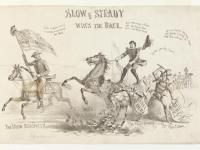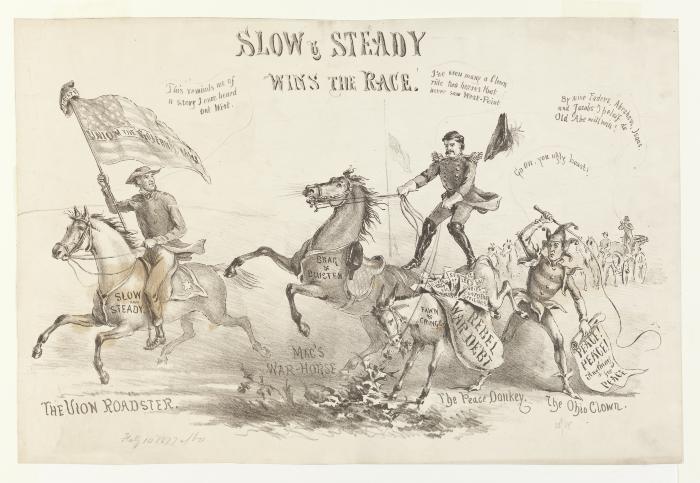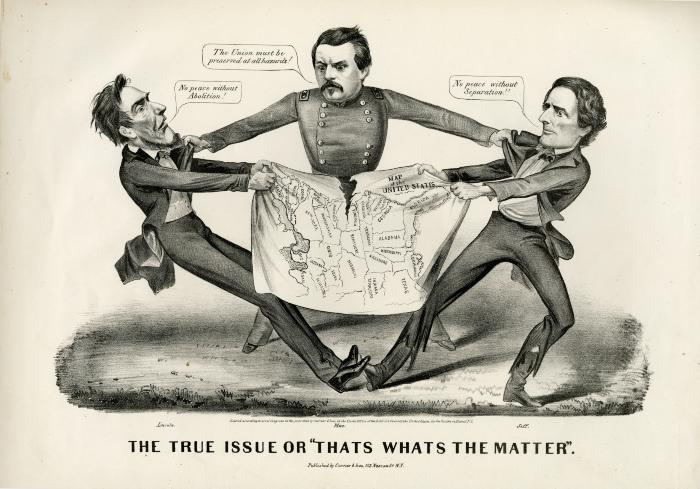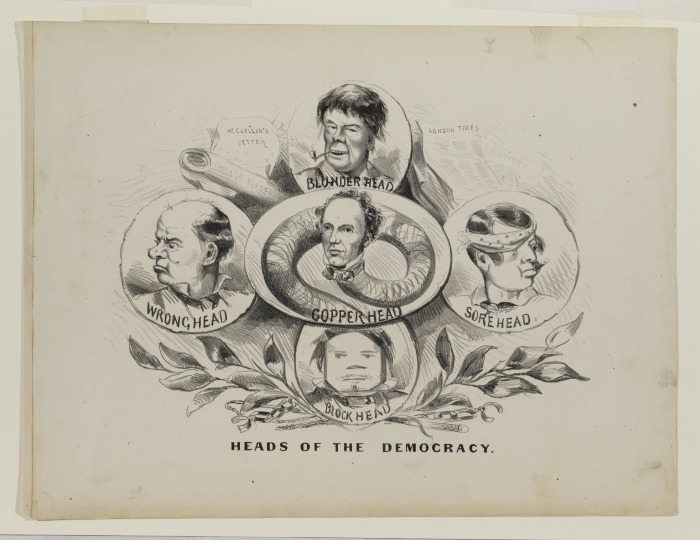Tuesday, November 4, 2014, was Election Day in Philadelphia. One hundred and fifty years ago Americans headed to the polls to participate in another important election. On Tuesday, November 8, 1864, voters decided whether to elect Democratic candidate George McClellan or Republican presidential incumbent Abraham Lincoln. The presidential election of 1864 was a crucial election in our nation’s history because it would directly determine the outcome of the Civil War and ultimately, the fate of the Union.
After three long years of Civil War, the nation grew tired of the continuing bloodshed, and so a war opposition group called the Peace Democrats formed in the North. Also known as the Copperheads, the Peace Democrats wanted an immediate end to the Civil War. They believed the South ought to remain in the Union, but if the South wanted its independence, it should be allowed to secede from the Union.
George Pendleton, McClellan’s vice presidential running mate, was a staunch Copperhead. However, McClellan, who had served as commander of the Army of the Potomac, rejected the notion of an immediate end to the war and disagreed with his party’s platform, which would allow the South to form the Confederate States of America. Consequently, McClellan’s views on the war seemed inconsistent to many voters. Lincoln, on the other hand, would never accept peace without first restoring the Union and abolishing slavery. Despite the divisiveness in his political party and the fact that the country had grown war-weary, Lincoln won a landslide victory. He was reelected with 55 percent of the vote and won every state except New Jersey, Kentucky, and Delaware. Lincoln’s victory meant that the nation was willing to continue fighting in order to secure the abolition of slavery and the restoration of the Union.
As we’ve worked to select approximately 500 political cartoons as part of the Historical Society of Pennsylvania’s Historic Images, New Technologies project, we’ve come across several cartoons depicting the 1864 presidential election. In the 1864 cartoon below, “Slow and Steady Wins the Race,” the artist depicts McClellan’s conflicting viewpoints on the war. McClellan tries to straddle two horses by placing one leg on the “Mac War Horse” and the other on “The Peace Donkey.” Meanwhile, Lincoln rides off to victory on his horse “Slow and Steady.”
Slow and Steady Wins the Race, 1864. Historical Society of Pennsylvania cartoons and caricatures collection (#3133)
In the 1864 cartoon below, Liberty wields a sword and shield, calls McClellan an “unworthy Son of a great Nation,” and tells him to abandon his bid for the White House.
Little Mac Trying to Dig His Way to the White House but is Frightened by Spiritual Manifestations, 1864. Historical Society of Pennsylvania cartoons and caricatures collection (#3133)
In an 1864 political cartoon published by Currier & Ives, McClellan serves as mediator between two men tearing the nation apart, Abraham Lincoln (president of the Union) and Jefferson Davis (president of the Confederacy).
The True Issue or "Thats Whats the Matter," Currier & Ives, 1864. Historical Society of Pennsylvania cartoons and caricatures collection (#3133)
In another 1864 cartoon published by Currier & Ives, a Copperhead is surrounded by a Blunderhead, Sorehead, Blockhead, and Wronghead. The cartoon is a commentary on McClellan’s acceptance of the presidential nomination and rejection of the Democratic Party’s peace platform.
Heads of the Democracy, Currier & Ives, 1864. Historical Society of Pennsylvania cartoons and caricatures collection (#3133)
Researching political cartoons from the Civil War era is certainly a fun and rewarding experience. The cartoons we’ve found depicting the election of 1864 have reminded me that elections shape the course of history and that every vote counts.





